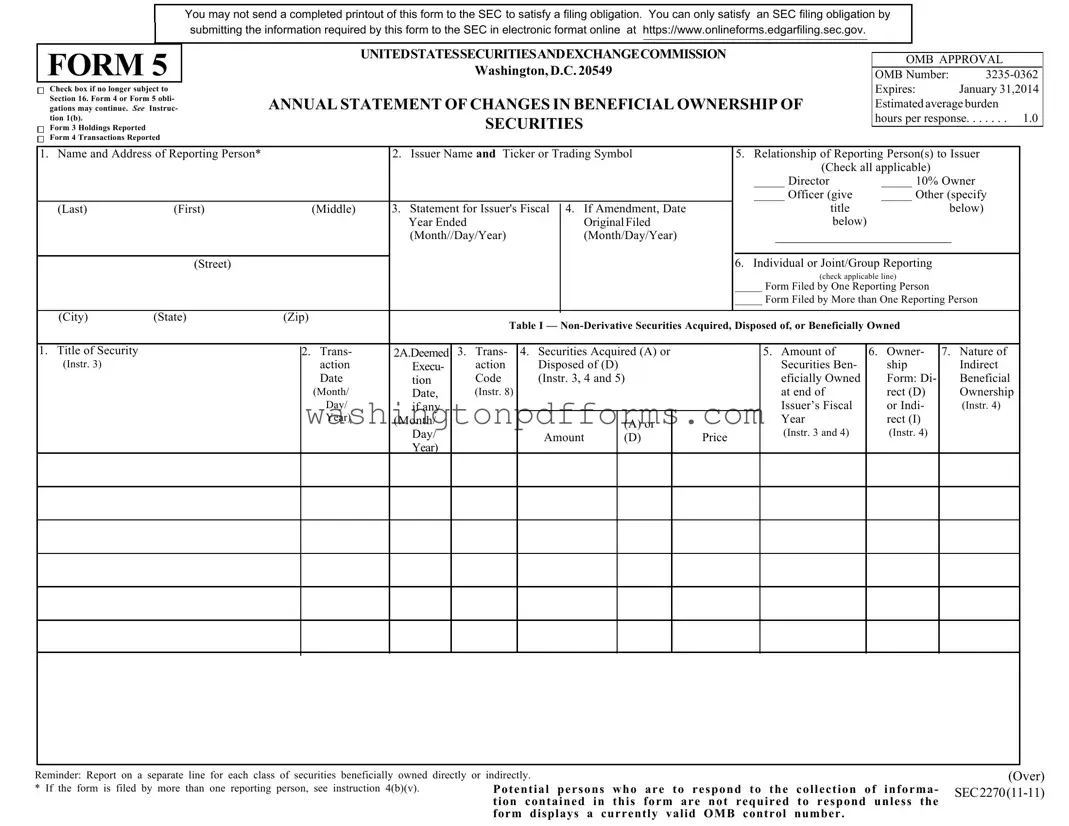When completing the Washington 5 form, individuals often encounter several common mistakes that can lead to complications or delays in processing. Understanding these pitfalls can help ensure a smoother filing experience.
One frequent error is failing to include the correct name and address of the reporting person. This section is critical, as it identifies who is filing the form. Any inaccuracies can result in confusion or miscommunication with the SEC.
Another mistake involves neglecting to specify the issuer name and ticker symbol. This information is essential for the SEC to understand which company's securities are being reported. Omitting this detail can lead to the form being rejected or returned for correction.
Many filers also overlook the requirement to check the appropriate box for the relationship of the reporting person to the issuer. This section must accurately reflect the individual's role, whether as a director, officer, or other specified relationship. Incorrect selections can misrepresent the reporting person's position and obligations.
Inaccuracies in the transaction dates are another common issue. Filers must ensure that the dates provided are correct and correspond to the fiscal year being reported. Mistakes in this area can complicate compliance and lead to potential penalties.
Some individuals fail to report all required securities transactions. Each class of securities must be listed on a separate line, and all acquisitions or dispositions should be documented. Missing transactions can lead to incomplete filings, which may result in enforcement actions.
Additionally, filers sometimes neglect to indicate whether the form is being filed by one or more reporting persons. This distinction is important for clarity, especially in joint filings. Misunderstanding this requirement can create confusion regarding who is responsible for the information provided.
Another mistake occurs when individuals do not properly complete the section regarding derivative securities. This includes failing to provide details about the transaction type, conversion price, or expiration dates. Incomplete information can hinder the SEC's ability to process the filing effectively.
Lastly, many people overlook the necessity of a manual signature on the form. Even if the filing is submitted electronically, a signed copy must be included. Failing to provide a signature can lead to the form being deemed invalid.
By being aware of these common mistakes, individuals can improve their accuracy and compliance when completing the Washington 5 form. Proper attention to detail can prevent delays and ensure that all required information is accurately reported.
